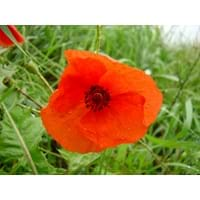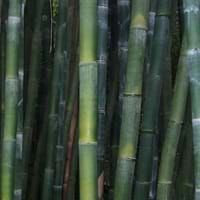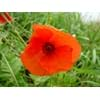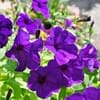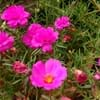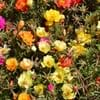Life Span
Annual
Perennial
Origin
Europe, Northern Africa, Central Asia, Western Asia
China
Types
Not available
Greenstripe Vivax, Moso, Weavers Bamboo, Oldhamii
Number of Varieties
Not Available
Habitat
Cultivated Beds
Subtropical climates, Wet Woods
USDA Hardiness Zone
4-8
8-11
AHS Heat Zone
12 - 1
12 - 8
Sunset Zone
A1, A2, A3, 1a, 1b, 2a, 2b, 3a, 3b, 4, 5, 6, 7, 8, 9, 10, 11, 12, 13, 14, 15, 16, 17, 18, 19, 20, 21, 22, 23, 24
H1, H2, 8, 9, 14, 15, 16, 17, 18, 19, 20, 21, 22, 23, 24
Habit
Upright/Erect
Upright/Erect
Flower Color
Red, Orange Red, Black
Not Available
Flower Color Modifier
Bicolor
Bicolor
Fruit Color
Sandy Brown, Chocolate
Not Available
Leaf Color in Spring
Light Green, Gray Green
Dark Green
Leaf Color in Summer
Light Green, Gray Green
Light Green
Leaf Color in Fall
Not Available
Dark Green
Leaf Color in Winter
Light Green
Dark Green
Leaf Shape
Pinnate
Acicular
Plant Season
Spring, Summer
Spring, Summer, Fall, Winter
Sunlight
Full Sun, Partial Sun
Full Sun, Partial Sun
Growth Rate
Very Fast
Slow
Type of Soil
Loam, Sand
Clay, Loam, Sand
The pH of Soil
Neutral
Acidic, Neutral, Alkaline
Soil Drainage
Well drained
Average
Bloom Time
Late Spring, Early Summer, Summer
Not Available
Tolerances
Drought
Drought
Where to Plant?
Container, Ground, Pot
Container, Ground
How to Plant?
Seedlings
Grafting, Seedlings, Stem Planting, Transplanting
Plant Maintenance
Medium
Medium
Watering Requirements
Keep ground moist, Keep the Soil well drained, Medium, Requires regular watering
Needs watering once a week, Use Mulches to help prevent water loss during hot and windy weather, Water Deeply
In Summer
Lots of watering
Lots of watering
In Spring
Moderate
Moderate
In Winter
Average Water
Average Water
Soil pH
Alkaline, Neutral
Acidic, Neutral, Alkaline
Soil Type
Loam, Sand
Clay, Loam, Sand
Soil Drainage Capacity
Loam, Moist but well drained
Average
Sun Exposure
Full Sun
Full Sun, Partial Sun
Pruning
No need to prune, Remove damaged leaves, Remove dead branches, Remove dead leaves
Do not prune during shooting season, Prune in late summer or fall, Remove damaged leaves
Fertilizers
All-Purpose Liquid Fertilizer
All-Purpose Liquid Fertilizer
Pests and Diseases
Adelgids, Downy mildew, Red blotch
Black sooty mold, Mealybugs, Mosaic viruses, Powdery mildew, pythogens, Stem rot
Plant Tolerance
Drought
Drought
Flower Petal Number
Single
Single
Foliage Texture
Medium
Coarse
Foliage Sheen
Matte
Matte
Attracts
Butterflies
Deers, Rabbits, Rats, Squirrels
Allergy
Headache, Toxic if not prepared properly
allergic conjunctivitis, Asthma, Inflammation, Throat itching
Aesthetic Uses
Beautification, Cut Flowers, Decorating walls, Hanging Basket, Showy Purposes, Used as an interior landscaping species, Used for decorating walls, fences, gates, hedges, etc.
Showy Purposes
Beauty Benefits
Not Available
Not Available
Environmental Uses
Air purification
Agroforestry, Air purification, No fertilizer, pesticides, or herbicides needed
Medicinal Uses
Anodyne, Cancer, Emmenagogue, Emollient, Expectorant, Hypnotic, Sedative, Tonic
Clears heat, Cold, fidgeting, Treating fever, Urinary tract problems
Part of Plant Used
Flowers, Leaves, Seeds
Leaves, Stem
Other Uses
Cake, Cut Flowers, Decoration Purposes, Used for its medicinal properties, Used for making black and brown dye, Used in flavouring curries, teas, Used to flavour soups
Application in Handicrafts, Showy Purposes, Used As Food, Used in Furniture, Used in paper industry
Used As Indoor Plant
Yes
No
Used As Outdoor Plant
Yes
Yes
Garden Design
Cottage garden, Cutflower, Flower borders, Hanging Basket, Showy Tree
Feature Plant, Screening / Wind Break, Tropical
Botanical Name
PAPAVER rhoeas
BAMBUSA oldhamii
Common Name
Corn Poppy, Flanders Field Poppy, Shirley Poppy
Clumping Bamboo, Giant Timber Bamboo, Oldham's Bamboo
In Hindi
शर्ली अफीम
Bānsa
In German
Klatschmohn
Bambus
In French
shirley pavot
Bambou
In Spanish
Shirley amapola
Bambú
In Greek
Shirley παπαρούνας
μπαμπού
In Portuguese
Shirley poppy
bambu
In Polish
Shirley maku
Bambus
In Latin
Shirley, papaveris
Bamboo
Phylum
Tracheophyta
Magnoliophyta
Class
Magnoliopsida
Liliopsida
Order
Ranunculales
Poales
Family
Papaveraceae
Poaceae
Clade
Angiosperms, Eudicots
Not Available
Tribe
Papavereae
Bambuseae
Subfamily
Paperveroideae
Not Available
Number of Species
Not Available
Importance of Shirley Poppy and Giant Timber Bamboo
Want to have the most appropriate plant for your garden? You might want to know the importance of Shirley Poppy and Giant Timber Bamboo. Basically, these two plants vary in many aspects. Compare Shirley Poppy and Giant Timber Bamboo as they differ in many characteristics such as their life, care, benefits, facts, etc. Every gardener must at least have the slightest clue about the plants he wants to plant in his garden. Compare their benefits, which differ in many ways like facts and uses. The medicinal use of Shirley Poppy is Anodyne, Cancer, Emmenagogue, Emollient, Expectorant, Hypnotic, Sedative and Tonic whereas of Giant Timber Bamboo is Clears heat, Cold, fidgeting, Treating fever and Urinary tract problems. Shirley Poppy has beauty benefits as follows: Not Available while Giant Timber Bamboo has beauty benefits as follows: Not Available.
Compare Facts of Shirley Poppy vs Giant Timber Bamboo
How to choose the best garden plant for your garden depending upon its facts? Here garden plant comparison will help you to solve this query. Compare the facts of Shirley Poppy vs Giant Timber Bamboo and know which one to choose. As garden plants have benefits and other uses, allergy is also a major drawback of plants for some people. Allergic reactions of Shirley Poppy are Headache and Toxic if not prepared properly whereas of Giant Timber Bamboo have allergic conjunctivitis, Asthma, Inflammation and Throat itching respectively. Having a fruit bearing plant in your garden can be a plus point of your garden. Shirley Poppy has no showy fruits and Giant Timber Bamboo has no showy fruits. Also Shirley Poppy is not flowering and Giant Timber Bamboo is not flowering . You can compare Shirley Poppy and Giant Timber Bamboo facts and facts of other plants too.
